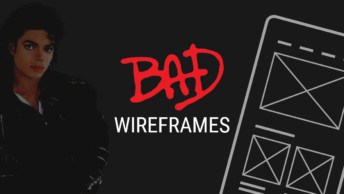Qualitative interviewing is an effective technique to quickly understand more about a target user group. It is a key skill that any aspiring user researcher should develop. It is important to carefully craft the questions to ensure the sessions run efficiently and get the desired information. This article outlines best practice tips on creating effective session guides, ensuring your questions produce great results.
Don’t Ask Leading Questions
A leading question guides the respondent to a desired answer by implying that there is a correct answer. People tend to provide socially desirable answers, so if you ask a question that guides them, they will likely provide one that they believe you want to hear. Leading questions can be used by people to persuade someone. They should not be used when trying to uncover new information or understand an audience. They reduce the objectivity of the session, and therefore, reduce the reliability of the results.
Example:
Leading: ‘Why would you prefer to use our product?’
Better: ‘What are your thoughts about using our product?
In the leading example, it implies that the respondent prefers the product and is enquiring as to why. The respondent may list a bunch of reasons that they like the product but may leave out crucial information where they believe the product could improve. Asking about their opinions and thoughts will provide them with a platform to discuss the product freely.
Example:
Leading: Would you prefer to use the product to improve efficiencies or to gain an overview?
Better: Why might you use this product?
In this example, the interviewer provides two reasons why someone might use a product. The interviewer may have only considered the two reasons why someone may use the product. Simply asking why they may use the product achieves the same goal, but also allows the respondent to consider other options.
To avoid leading questions, act as if you know nothing of the topic. Note down what you would ask if you have no information at all. Keep the questions simple, neutral and free from any words with connotations or emotions. It is also best to have an independent observer assess the topic, as it is easier for them to have an unbiased opinion on the matter.
Behavioural, Attitudinal
People often hold a belief that does not match with their behaviours. Using a mixture of attitudinal and behavioural questions uncovers what a person does, but also their thoughts about their actions. Attitudinal questions are used to understand their opinions and motivations. Behavioural questions are used to find out how a participant does something. It is best to utilise a mixture.
Example:
Attitudinal: How often should you brush your teeth?
Behavioural: How many times did you brush your teeth last week?
Try to keep all behavioural questions about the user’s past, as future behaviours are influenced by opinions and attitudes. It is best practice to repeat questions from a different angle. Don’t be afraid of users repeating themselves or going over a topic multiple times.
Ask Open-Ended Questions Instead of Closed Questions
Open-ended questions are ones that require more than one word to answer. Closed questions result in either a yes/no situation. Open-ended questions are used to find out people’s goals, motivations and pain points. They provide an opportunity for the participant to speak freely on the topic.
Example:
Yes/No: Do you like coffee?
Open: What are your thoughts on coffee?
Closed questions should be avoided unless you want to either clarify to gain more context to the user’s situation. Yes/No questions close down conversations and can be considered as quantitative. The following examples are both fine to use in an interview, as they will put other details into perspective.
Context: Do you drink coffee?
Clarify: You mentioned you drink coffee, correct?
When creating your questionnaire, try and stick with ‘how’, ‘why’, ‘what’, ‘when’ and ‘where’ questions.
Don’t Use Double-Barreled Questions
Sometimes interviewers get excited and want to ask multiple things at once. Double-barreled questions touch on more than one topic. This can be overwhelming to answer, and respondents may either try to answer both at once or answer only one part of the question. If you want to ask something on multiple topics, it is best to split them into two different questions.
Example:
Double-barreled: What do you like about coffee and new coffee products?
Better: What do you like about coffee products?
It is normal in casual conversation to ask questions in such a manner. Interviewing is best when the questions are short and to the point, focusing on one topic.
Differentiate Between Quantitative and Qualitative Questions
Quantitative and qualitative questions both have their own strengths and weaknesses. Quantitative questions are typically reserved for surveys but can be used in interviewing to add some context and allow the interviewer to ask more follow-up questions. They mostly uncover ‘who’ and ‘what’. Qualitative questions will provide detailed information on the topic of interest, uncovering the ‘why’ and ‘how’.
Examples of quantitative questions:
- Numerical answers: How many coffees do you drink a day?
- Preferences: What type of coffee drink do you prefer?
- Single word answers: What brand of coffee do you drink?
It is not immediately obvious and clear-cut the quantitative nature of these questions. You can tell through the low complexity of data gathered. If you ask these questions to participants, you will get a straightforward answer. However, the issue is that the responses are not statistically valid, and require further investigation. You can better use your time in an in-depth one on one session asking qualitative questions such as:
Examples of qualitative questions:
- Recount your morning routine.
- Why do you prefer one brand over another?
- Why do you drink coffee everyday?
Shifting to why and how people do things, outlining goals, motivations, pain points and delights gives a much more in-depth perspective. These insights can be validated later through other techniques, but interviewing is the quickest and easiest way to gather them.
Wrap Up
For qualitative interviewing, there are few clear best practices. Each interviewer has their own way of gathering information and forming questions. The tips above are there to guide you but are not definitive rules that one cannot break. I hope these help to elevate your interviewing process and gather better insights.






amazing and best content and post about effective interview questions.